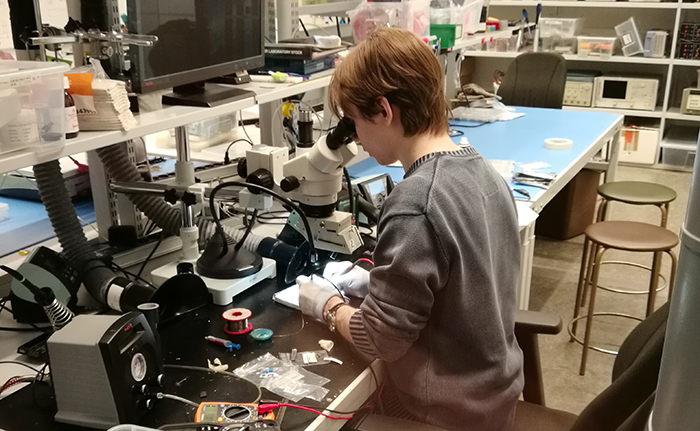Software-defined radio, Open Source, custom-made camera – this is the Aalto-3 satellite, the one-litre CubeSat
If everything goes as planned, the nanosatellite being designed and built fully by students could be ready to be launched into space at around Christmas 2019.

The Aalto-3 is nearly 100 percent designed and built by students.
The Aalto-1 and Aalto-2 satellites were launched into space last year, and the Suomi 100 satellite, which celebrates the 100th anniversary of the Finnish independence, is waiting for its own turn to be launched. The construction of the latest member of the satellite family, the Aalto-3, is already moving forward at a fast pace. If the evaluations of the technology and the flight readiness go as planned the Aalto-3 will be ready for launch in late 2019.
'Delays are more than usual in the world of satellites, so it is more likely that the space voyage will begin in 2020', the Aalto-3 Project Manager Alexandros Binios says.
One-litre cube
The Aalto-3 is a one-unit, or 1U sized Cubesat satellite, which means that its dimensions are 10 x 10 x 10 centimetres. A 1U Cubesat satellite is allowed to have a maximum mass of 1.33 kilogrammes.
In this payload of slightly over a kilo, the students need to include the main computer and the electrical power system powered by the solar panels. There is also packed in a software-defined radio, a microphone, and a camera.
'The purpose for which the software-defined radio is used can be modified fairly flexibly, but at the moment the idea is that radio amateurs might be able to send their own commands for the satellite. The microphone allows us to observe through vibrations, for example, when the satellite's antennas are being deployed. Also, if a micrometeoroid were to collide with the satellite we would notice it as well', Binios says.
A suitable camera was found off-the-shelf, although it was not ready for use in a satellite. The team will have to make the needed modifications to make it suitable for the space environment, including changing the lens for one that withstands radiation, and replacing all plastic parts with metallic ones.
Small budget
The Aalto-3 is nearly 100 percent designed and built by students. A core group of more than 25 people has been divided into subsystem teams which work on aspects including the body, software, the power system and the communications system. The lion's share of the budget of the project, 50,000–60,000 euros, goes into the launch. Binios estimates that the materials of the satellite will cost about 10,000 euros.
'In larger satellites a single component can cost that much.'
The tight budget is possible because the university offers the needed facilities and equipment, and the diligence of the students is rewarded with study credits. If a price were set for working hours the price tag would be at a completely different level.
'Nanosatellites can actually be ordered online and they cost between 100,000 and 300,000 euros', says Juuso Mikkola.
If everything goes according to plan the Aalto-3 will be one of the first satellites operating on the Open Source principle.
'In practice it means that anyone can utilise the information in their own missions, or build a satellite of their own according to our model', Mikkola explains.
More information:
Alexandros Binios
alexandros.binios@aalto.fi


